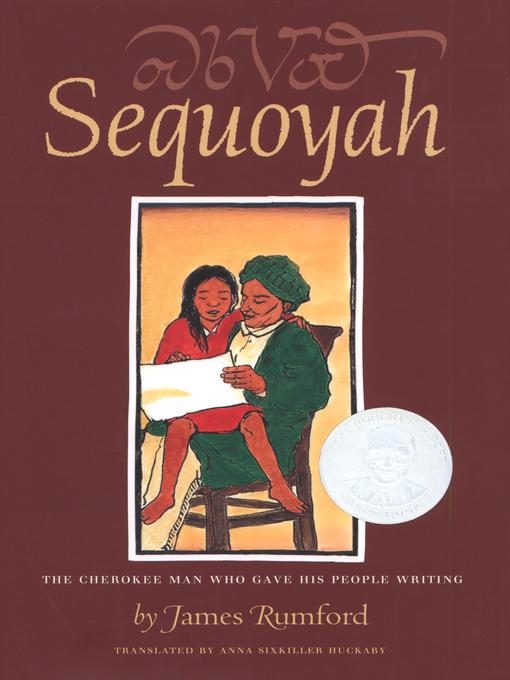
Sequoyah
The Cherokee Man Who Gave His People Writing
فرمت کتاب
ebook
تاریخ انتشار
2004
Lexile Score
700
Reading Level
3
نویسنده
James Rumfordشابک
9780547528724
کتاب های مرتبط
- اطلاعات
- نقد و بررسی
- دیدگاه کاربران
نقد و بررسی

November 8, 2004
Rumford's (Nine Animals and the Well
) economical yet lyrically told picture-book biography begins as the unseen narrator's father explains how California's Giant Sequoia, or redwoods, earned their name. "This Sequoyah must have been famous,/ .../ He must have been as tall and as strong as these trees." The narrative then recounts the story of a man, crippled, who was born in Tennessee in the 1760s to "a Cherokee woman and a white man he never knew."
Sequoyah "was not a chief, but he loved his people like one./ He wanted them to stand as tall as any people on earth." Sequoyah knew no English and could not read, but invented a writing system for the Cherokee, believing that "Writing will make us strong." The determined man scratched onto slats of wood hundreds of symbols—one for each word. When detractors, fearing these signs were evil, burned down his cabin and his work, Sequoyah began again using a different tactic; he invented a syllabary of 84 signs, "to spell out the sounds of the language." Sixkiller Huckaby's Cherokee translation, presented alongside the English text, makes the story all the more real and relevant. Reminiscent of woodblock prints, Rumford's spare mixed-media compositions in shades of deep green and red clay, create a pleasingly subtle, rough-hewn texture. The art's vertical format effectively imitates the stature of both the mighty redwoods and their namesake who, despite his physical ailments, stands tall and strong. Ages 5-9.

Starred review from October 1, 2004
Gr 1-4 -Fascinated by the Giant Sequoias they see during a California vacation, unnamed children listen to their father tell of the trees' namesake from the opposite side of North America. Thus, in short paragraphs accompanied by richly textured illustrations, Rumford presents the seminal events in Sequoyah's life, culminating in his invention of the Cherokee syllabary. The author writes with a concise eloquence that echoes the oral tradition and makes this one of those rare gems of read-aloud nonfiction. As in his other picture books, the artwork is executed in a style and medium that evoke the period and culture of the subject, in this case creating bold-lined scenes reminiscent of 19th-century woodblock prints. Done in ink, watercolor, pastel, and pencil, the illustrations were adhered to a rough piece of wood, and its textures were highlighted through the use of chalk and colored pencil. The perfect finishing element is the parallel text in Cherokee, which not only demonstrates the product of Sequoyah's genius but also makes this beautiful book readily accessible to Cherokee children in their own language. The end matter includes additional facts and the complete syllabary. Sequoyah is a perfect companion to Rumford's other picture books on important world scholars from history and legend-Jean-Franois Champollion, Ibn Battuta, Cadmus-whose (mostly linguistic) achievements are comparatively unsung. A must-have for all collections.-Sean George, Memphis-Shelby County Public Library & Information Center, Memphis, TN
Copyright 2004 School Library Journal, LLC Used with permission.

October 15, 2004
Gr. 1-3. This fascinating biography, presented in a tall, slim format, introduces Sequoyah, who decided in the early 1800s to give the Cherokee language a written form. Creating 84 symbols for sounds, he began to teach the language to others in the Cherokee nation. This technique spread, enabling the publication of books and newspapers, and it survives today. Below the paragraphs of English text, appearing usually on the book's right-hand pages, is a translation into the Cherokee language. Like the giant sequoia trees that appear in the framework story, the illustrations on the facing pages are vertical and stately. Created in ink, watercolor, pastel, and pencil, the unusual artwork has a primitive quality that reflects the strength and deceptive simplicity of the text. Back matter includes a chart showing the Cherokee syllabary, a discussion of Sequoyah and his accomplishment, and a time line of his life.(Reprinted with permission of Booklist, copyright 2004, American Library Association.)

























دیدگاه کاربران